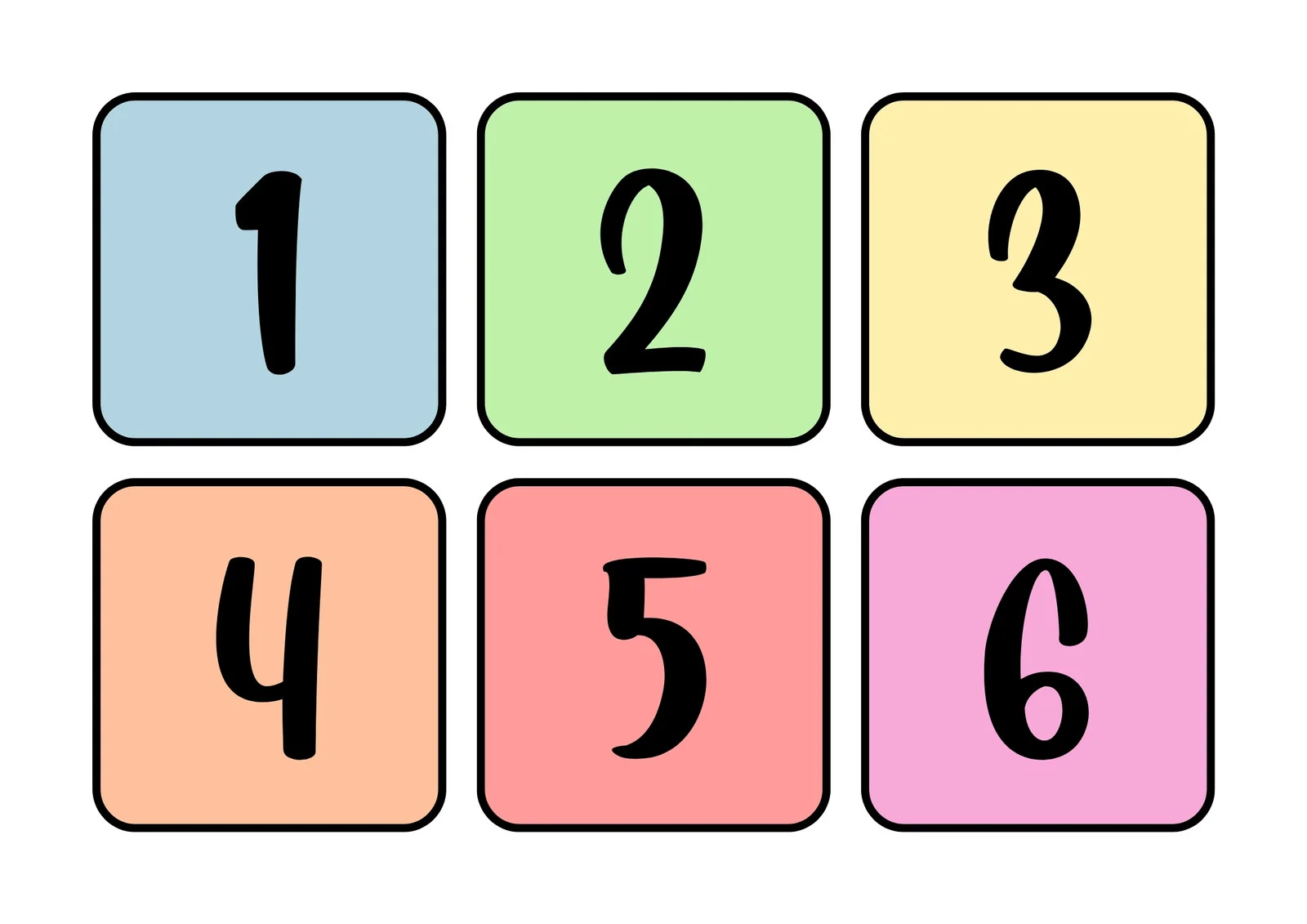What is Number?
In mathematics, a number is a fundamental concept used to represent quantity, position, and value. Numbers are abstract entities that serve as tools for counting, measuring, and ordering. The term "number" encompasses various types of numerical representations, including natural numbers, whole numbers, integers, rational numbers, irrational numbers, and complex numbers. Each of these categories has distinct properties and uses in mathematical operations. For example, natural numbers (1, 2, 3, ...) are used for counting objects, while whole numbers (0, 1, 2, 3, ...) extend this concept by including zero. Integers (both positive and negative whole numbers) further expand the numerical landscape by allowing for the representation of debts or deficits. Rational numbers, which can be expressed as a fraction of two integers, and irrational numbers, which cannot be expressed as a simple fraction (like the square root of 2 or pi), highlight the richness of numerical systems. Finally, complex numbers, which combine real and imaginary units (such as 3 + 4i), illustrate how numbers can transcend conventional dimensions and have applications in advanced fields like engineering and quantum physics. Thus, numbers form the foundational language of mathematics and are essential for understanding and describing the world around us.
To illustrate the diverse nature of numbers, let’s examine some practical examples in various contexts. In everyday life, natural numbers are commonly encountered when counting items, such as “I have three apples.” This simple counting mechanism forms the basis of commerce, inventory, and daily transactions. Moving to a broader scope, the use of integers becomes evident in contexts involving temperature changes; for instance, if the temperature rises from -5 degrees Celsius to 10 degrees Celsius, both positive and negative integers are necessary to accurately describe the situation. Rational numbers come into play in financial transactions where fractions represent parts of a whole, such as when dividing a bill among friends—if three people share a $45 dinner bill, each person would pay $15, which is a rational number expressed as a fraction (45/3). In contrast, irrational numbers manifest in geometry; the length of the diagonal of a square with sides of length one is represented by the square root of 2, which cannot be expressed as a simple fraction and has a non-repeating decimal expansion. Lastly, complex numbers emerge in the field of electrical engineering; for example, in alternating current (AC) circuits, complex numbers are used to represent voltages and currents, providing a way to account for both magnitude and phase angle. Thus, numbers are not just abstract concepts but practical tools that facilitate a wide range of activities and disciplines, shaping our understanding of the universe.
Why is it essential to learn Numbers?
Learning numbers is essential because they form the foundational building blocks of everyday life and decision-making. Numbers are omnipresent in our daily routines, guiding a multitude of activities from budgeting finances to cooking. For instance, when preparing a meal, understanding measurements is crucial; a recipe may call for two cups of flour or half a teaspoon of salt. Without a grasp of numbers, one might struggle to prepare the meal accurately, which can lead to poor results or even health hazards. In financial contexts, numbers guide personal budgeting, helping individuals track income, expenses, and savings. A person must understand basic arithmetic to determine how much money they can spend or save each month, leading to informed decisions about investments, loans, and savings accounts. Furthermore, in an increasingly data-driven world, the ability to interpret numbers and statistics is crucial for making informed decisions. Whether analyzing sales data at work or understanding health statistics from a public health report, numerical literacy enables individuals to engage meaningfully with information that impacts their lives, fostering better choices and enhancing overall well-being.
Numbers play a vital role in academic achievement and career success across various fields. Proficiency in numerical concepts is essential in disciplines such as mathematics, engineering, economics, and the sciences, where quantitative analysis is integral to research and innovation. For example, a student aspiring to enter the field of engineering must understand concepts such as algebra, calculus, and statistics to excel in their studies and future careers. These mathematical skills are not only vital for coursework but also for solving real-world problems, such as optimizing designs or conducting experiments. Moreover, many careers now demand strong numerical skills, particularly in finance and technology. In finance, professionals analyze numerical data to assess investments, manage risks, and develop financial strategies, while in technology, data scientists rely on statistical methods to extract insights from large datasets. As industries continue to evolve, the demand for individuals with strong mathematical skills is likely to grow, making numerical literacy a critical asset for academic and career advancement. Thus, by learning numbers, individuals not only enhance their intellectual capabilities but also open doors to various opportunities in their educational and professional journeys.
The study of numbers significantly contributes to the development of problem-solving and critical thinking skills, essential competencies in both personal and professional contexts. Engaging with numerical concepts fosters logical reasoning and analytical thinking, enabling individuals to approach problems systematically. For instance, solving mathematical equations requires a step-by-step approach, encouraging learners to identify patterns, make connections, and derive solutions through logical deduction. This skill set is applicable beyond mathematics; in everyday life, it aids in making sense of complex situations, such as evaluating risk versus reward when making financial investments or determining the best route to take when navigating traffic. In the workplace, strong problem-solving abilities are highly valued, as employees are often tasked with addressing challenges that require innovative thinking and data-driven analysis. For example, a manager might analyze sales figures to identify trends and determine strategies for improving performance, relying on numerical analysis to guide their decisions. Moreover, in a broader societal context, the ability to critically evaluate statistical data, such as those presented in news articles or research studies, empowers individuals to discern fact from misinformation. In this way, learning numbers cultivates not only a foundational understanding of mathematics but also equips individuals with the skills necessary to navigate an increasingly complex world, enhancing their capacity to contribute meaningfully to society.
Types of Numbers
Natural Numbers
Natural numbers are the most basic and intuitive type of numbers, representing the set of positive integers that are used for counting and ordering. The set of natural numbers begins with 1 and continues indefinitely: 1,2,3,4,5,…. These numbers are fundamental to our understanding of quantity; they are the numbers we first encounter when we learn to count objects around us, such as apples, books, or even people. For example, if a child has three apples, the quantity can be represented by the natural number 3. Natural numbers can also be used to establish an order, such as when ranking participants in a race; the runner who finishes first is assigned the number 1, the second runner gets >2, and so on. While natural numbers are straightforward, they are the foundation upon which more complex types of numbers are built. They do not include zero or any negative numbers, making them the simplest form of numerical representation. More about Natural Numbers
Whole Numbers
Whole numbers expand on the concept of natural numbers by including zero in the set. Thus, whole numbers are represented as 0,1,2,3,4,5,…. The inclusion of zero is crucial in many mathematical contexts, particularly in arithmetic and algebra. Whole numbers enable us to express quantities that may not exist, such as having zero apples when we eat all of them. This concept is especially important in fields like economics and statistics, where it is often necessary to denote the absence of a quantity. For instance, if a store's inventory is depleted, the count of a specific item can be represented as zero, providing a clear picture of the store's stock. Additionally, whole numbers are utilized in computational contexts, where they are often used as indices or counters. The concept of zero also allows for the establishment of a baseline from which other quantities can be measured, making whole numbers an essential element of numerical systems.
Integers
Integers encompass a broader range of numbers by including all whole numbers and their negative counterparts. The set of integers is represented as -3,-2,-1,0,1,2,3,…. This set is significant in various real-world applications, particularly when it comes to representing quantities that can take on both positive and negative values. For instance, when dealing with temperatures, integers are crucial; a temperature of -5 degrees Celsius indicates a temperature below freezing, while a temperature of 10 degrees Celsius is above freezing. Similarly, integers are used to represent financial situations, such as debts and credits. If someone owes $20, it can be represented as -20, while having $30 can be represented as +30. The ability to use negative numbers allows for a more comprehensive understanding of numerical relationships and dynamics in various fields, including science, finance, and engineering. Thus, integers play a vital role in quantifying and analyzing situations that involve loss, gain, or neutral states. More about Integers
Rational Numbers
Rational numbers are defined as numbers that can be expressed as the quotient of two integers, where the denominator is not zero. This includes fractions and whole numbers, leading to a representation of rational numbers in the form a / b, where a and b are integers and b ≠ 0. Rational numbers encompass a wide range of values, including integers (which can be expressed as fractions with a denominator of 1, like 1 / 3 for the integer 3) and common fractions like 1 / 2 or 3 / 4 . A practical example of a rational number can be found in cooking; if a recipe calls for 2 / 3 of a cup of sugar, this fraction conveys the precise measurement needed to achieve the desired sweetness. Rational numbers are also crucial in financial contexts, such as calculating interest rates, where percentages often translate to fractions. The concept of rational numbers allows for a more detailed understanding of quantities, facilitating precise measurements and calculations across various disciplines. More about Rational Numbers
Irrational Numbers
Irrational numbers are numbers that cannot be expressed as a simple fraction of two integers. Their decimal expansions are non-repeating and non-terminating, meaning they go on infinitely without repeating any pattern. Common examples of irrational numbers include the square root of 2 (√2), pi (π), and the mathematical constant e. For instance, the value of π is approximately 3.14159, but its decimal representation continues infinitely without a repeating sequence. This characteristic distinguishes irrational numbers from rational numbers and presents unique challenges and fascinations in mathematics. Irrational numbers are frequently encountered in geometry; for example, the diagonal of a square with sides of length one is equal to √2, demonstrating how these numbers can arise in spatial calculations. In art and design, the golden ratio (approximately 1.61803), which is an irrational number, is often used to achieve aesthetically pleasing proportions. The exploration of irrational numbers has deep implications in mathematics, philosophy, and the understanding of numerical systems, highlighting the complexities and wonders of the mathematical universe.
Primary and Secondary Sources
Complex numbers take the concept of numbers even further by introducing a new dimension to the numerical system. A complex number is expressed in the form a + bi, where a and b are real numbers, and i is the imaginary unit, defined by the property that i2 = -1. This definition allows for the inclusion of imaginary numbers in mathematical operations, enabling the solution of equations that would otherwise have no real solutions. For example, the equation x2 + 1 = 0 does not have real solutions, but it can be solved in the complex number system, yielding x = i and x = -i. Complex numbers are particularly significant in fields such as engineering, physics, and applied mathematics, where they are used to represent oscillations, waves, and electrical circuits. In electrical engineering, complex numbers facilitate the analysis of alternating current (AC) circuits, as they provide a convenient way to represent both magnitude and phase angle. The exploration of complex numbers not only expands the realm of mathematics but also has profound applications in various scientific disciplines, illustrating the versatility and richness of the number system. More about Complex Numbers
How Were Numbers Invented?
Prehistoric and Ancient Number Systems
The history of numbers dates back to prehistoric times, with early humans using simple tallying methods to keep track of quantities. The earliest evidence of numerical representation can be traced to ancient artifacts, such as the Ishango bone from Africa, dating back to around 20,000 BCE, which features a series of notches believed to represent counting. As societies evolved, so did their numerical systems. Ancient civilizations, such as the Sumerians around 3500 BCE, developed more sophisticated methods of counting, including a base-60 (sexagesimal) system, evident in their cuneiform writing. This system laid the groundwork for many aspects of modern mathematics, including our current understanding of time and angles (60 seconds in a minute, 360 degrees in a circle). Around the same time, the Egyptians were employing a base-10 (decimal) system, using hieroglyphs to denote numbers, which allowed for more complex calculations related to trade, architecture, and astronomy. The use of numbers in these ancient cultures facilitated advancements in agriculture, engineering, and record-keeping, illustrating how numerical systems were integral to the development of early civilizations. More about Ancient Numeral Systems
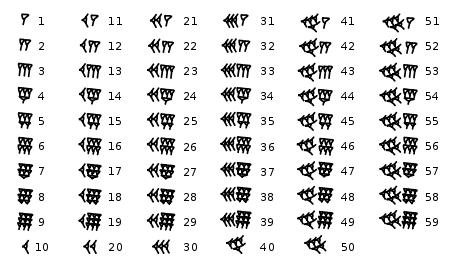
Cr.: drexel.edu
The Development of Numerical Concepts in Ancient Greece and Rome
The evolution of numbers continued with the ancient Greeks and Romans, who made significant contributions to mathematical thought and numerical representation. The Greeks, particularly through the works of mathematicians like Pythagoras and Euclid, began exploring the properties of numbers, including the classification of numbers into various types such as prime, composite, and rational numbers. They introduced geometric interpretations of numbers and laid the foundations for proofs and mathematical reasoning. The concept of irrational numbers also emerged during this period, as Greek mathematicians discovered that not all quantities could be expressed as fractions, exemplified by the realization that the diagonal of a square was not commensurable with its sides. Meanwhile, the Romans utilized a system of numerals (I, V, X, L, C, D, M) that was practical for trade and record-keeping but lacked a symbol for zero and did not facilitate complex calculations as effectively as the Greek and later Arabic systems. The limitations of Roman numerals became apparent as commerce and science advanced, highlighting the need for more efficient numerical systems that could accommodate the growing complexity of mathematics and trade. More about Roman Numerals
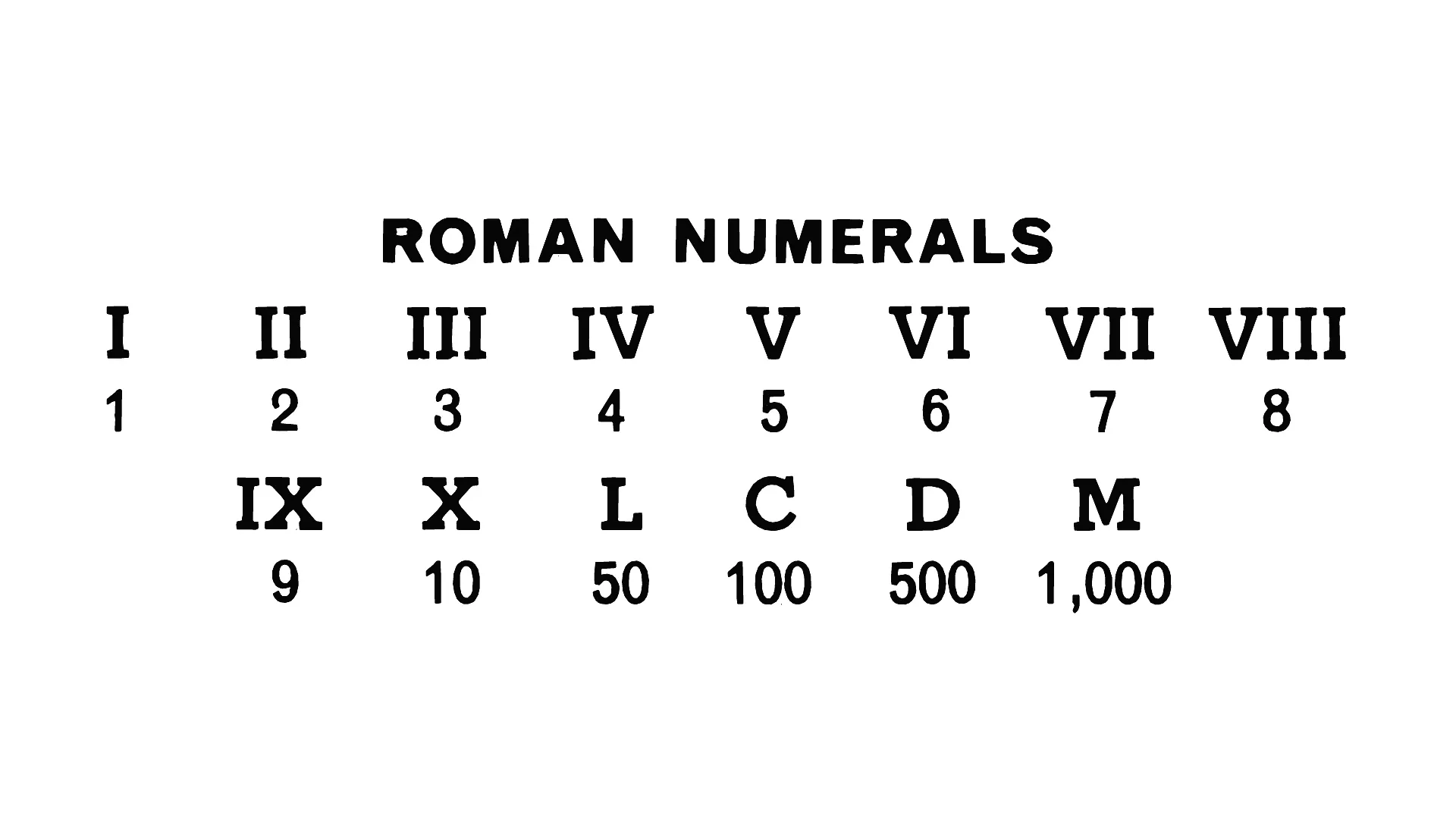
Cr.: Britannica
The Introduction of Zero and the Hindu-Arabic Numerals
A pivotal moment in the history of numbers occurred with the introduction of zero and the development of the Hindu-Arabic numeral system. Originating in India around the 5th century CE, the concept of zero (represented as a dot or small circle) revolutionized mathematics by providing a way to denote the absence of a quantity and allowing for more sophisticated calculations. Indian mathematicians like Brahmagupta formalized the rules for arithmetic involving zero, significantly advancing mathematical thought. By the 7th century, this numerical system began to spread to the Islamic world through trade and scholarship. The Persians and Arabs adopted the Indian numeral system, modifying it into the format we recognize today: the digits 0-9. The work of mathematicians such as Al-Khwarizmi and Al-Kindi helped popularize these numerals in the Islamic Golden Age, leading to the development of algebra and algorithms. By the 10th century, the Hindu-Arabic numeral system began to make its way to Europe, where it gradually replaced Roman numerals due to its efficiency and practicality in performing arithmetic calculations, ultimately laying the groundwork for modern mathematics. More about Hindu-Arabic Numerals
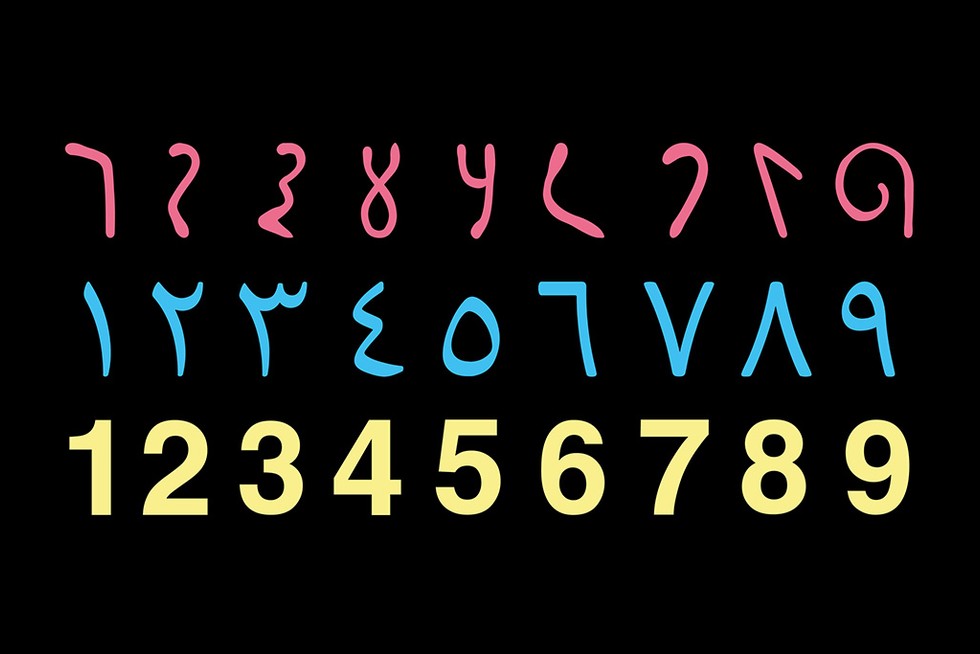
Cr.: HistoryExtra
The Renaissance and the Birth of Modern Mathematics
The Renaissance, spanning the 14th to 17th centuries, marked a significant period for the advancement of numbers and mathematics, characterized by a renewed interest in science, philosophy, and the arts. The introduction of the printing press facilitated the dissemination of mathematical knowledge across Europe, making works by scholars like Fibonacci, who published "Liber Abaci" in 1202, widely accessible. Fibonacci's book introduced the Hindu-Arabic numeral system to a broader audience, emphasizing its utility in trade and commerce. During this period, mathematicians began exploring more complex concepts, including negative numbers, fractions, and decimals, which were essential for advancements in commerce and navigation. The work of mathematicians like Descartes and Newton further propelled the study of numbers, leading to the establishment of analytic geometry and calculus. These developments not only transformed mathematics but also laid the foundation for scientific inquiry, enabling a deeper understanding of the natural world. The Renaissance's intellectual climate fostered a cultural shift that recognized the importance of numbers as tools for exploration and understanding, culminating in the emergence of modern mathematics. More about Modern Math
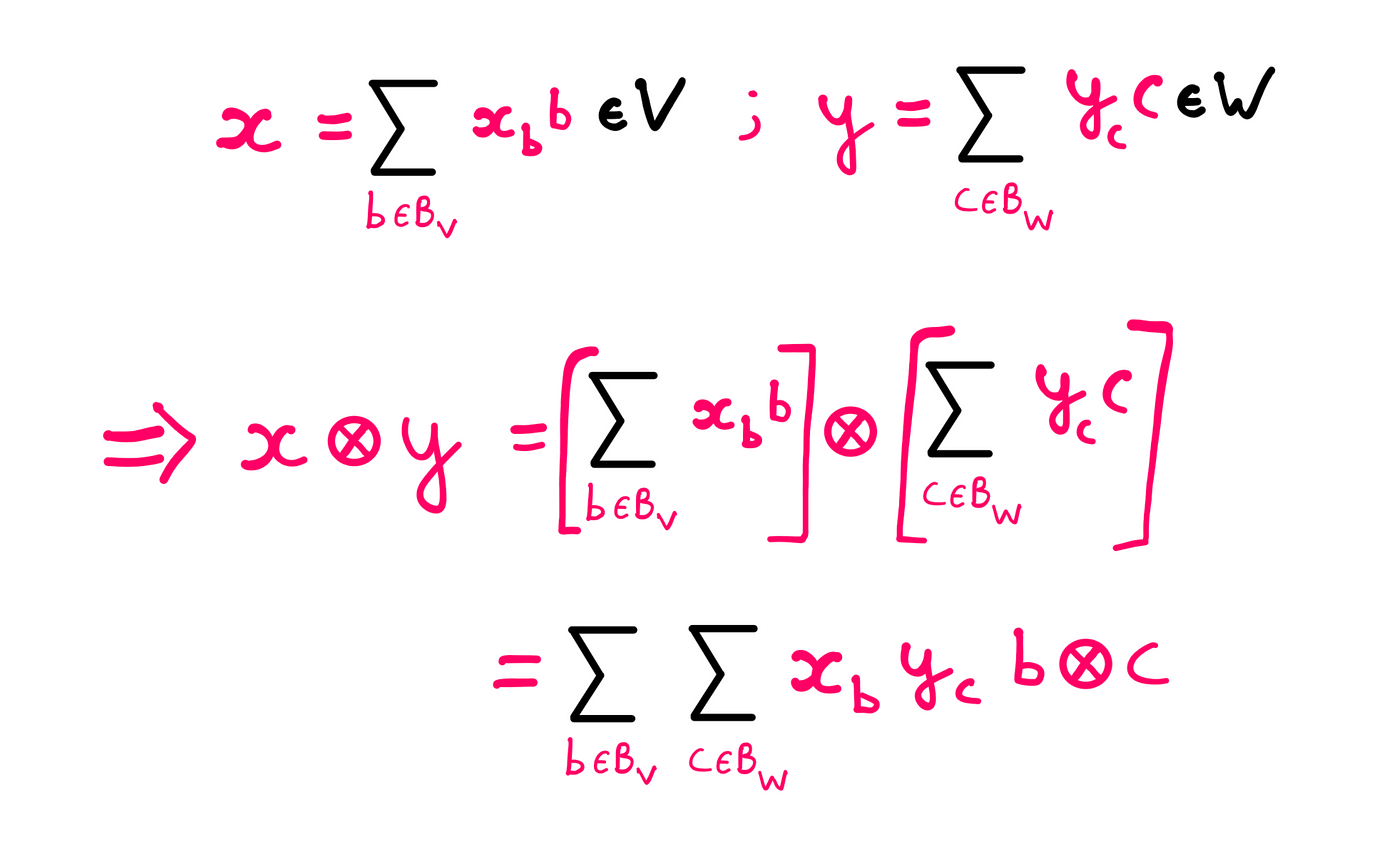
Cr.: Medium, Hemanth
The 19th and 20th Centuries: Expanding Mathematical Concepts
As the 19th and 20th centuries unfolded, the field of mathematics underwent a transformation characterized by the abstraction and formalization of numerical concepts. During the 19th century, mathematicians like Georg Cantor revolutionized the understanding of infinity and set theory, introducing the idea of different sizes of infinity and the notion of transfinite numbers. This abstraction led to a deeper exploration of the foundational elements of mathematics, paving the way for modern mathematical logic and theoretical frameworks. The development of complex numbers, as explored by mathematicians like Carl Friedrich Gauss, also gained prominence during this time, leading to significant advancements in fields like engineering and physics. In the 20th century, the introduction of computers and digital technology further revolutionized the use of numbers. The binary number system (0s and 1s), foundational to computer science, transformed how numbers are processed and manipulated in the digital age. Additionally, the advent of new branches of mathematics, such as chaos theory and fractal geometry, expanded the understanding of numbers and their applications in diverse fields, from nature to economics. The evolution of numbers continued to shape human understanding and interaction with the world, demonstrating the enduring importance of numerical systems throughout history.
Facts about Numbers
The concept of zero, which we now regard as a fundamental element of the number system, had a complex and gradual acceptance across various cultures. While the ancient Indians first formalized zero as a number around the 5th century CE, it took centuries for its significance to be recognized globally. In Europe, for instance, the acceptance of zero was met with skepticism and resistance. The Roman numeral system, which dominated Europe, did not have a symbol for zero, and the very idea of representing "nothing" was philosophically and mathematically challenging for many scholars. This resistance was largely due to the prevailing belief that numbers represented concrete quantities. The hesitation persisted until the late Middle Ages, when mathematicians began to see the utility of zero in simplifying calculations and solving equations. It wasn't until the 16th century, with the spread of the Hindu-Arabic numeral system, that zero became widely adopted in Europe. This pivotal acceptance not only transformed arithmetic but also revolutionized mathematics and paved the way for advancements in algebra, calculus, and computer science, making zero one of the most significant concepts in the history of numbers.
The Fibonacci sequence, a series of numbers where each number is the sum of the two preceding ones (starting from 0 and 1), is often celebrated for its mathematical elegance. However, its applications extend far beyond mathematics; it is deeply embedded in nature. The sequence can be observed in the arrangement of leaves on a stem, the branching of trees, the arrangement of a pine cone’s scales, and even the pattern of seeds in a sunflower. This phenomenon, known as phyllotaxis, is crucial for optimizing sunlight exposure and maximizing space in plants. The Fibonacci sequence also appears in animal breeding patterns, the spirals of shells, and the structure of galaxies. This remarkable link between numbers and nature suggests a profound underlying order in the universe. The sequence has also influenced art and architecture, leading to the concept of the "Golden Ratio," which is aesthetically pleasing and found in famous works such as the Parthenon and Leonardo da Vinci's "Vitruvian Man." The Fibonacci sequence exemplifies how mathematical concepts can illuminate the natural world's intricacies, revealing a beautiful interplay between numbers and the environment.
While most people are familiar with standard number systems like the decimal and binary systems, various non-standard number systems have been developed throughout history, each serving specific purposes. For instance, the balanced ternary system, which uses three digits: -1, 0, and 1, is notable for its unique approach to representing numbers. In this system, the position of each digit still indicates its value, but the inclusion of -1 allows for more straightforward calculations, especially in computer algorithms and certain types of circuit design. Similarly, complex numbers, which combine real and imaginary components, are essential in advanced mathematics and engineering, especially in fields such as signal processing and quantum mechanics. Furthermore, there are surreal numbers, which extend the number system to include infinitesimal and infinite quantities, providing a rigorous framework for calculus and mathematical analysis. These non-standard number systems illustrate the versatility of mathematical concepts and their ability to address a wide range of problems across different scientific and engineering disciplines.
The relationship between numbers and language is more intricate than it may seem. Research in cognitive science has demonstrated that the way numbers are expressed in different languages can significantly influence how speakers understand and use them. For instance, some languages, like Mandarin, utilize a more straightforward numerical system, making it easier for speakers to grasp mathematical concepts. In contrast, languages that employ more complex counting systems may create additional cognitive barriers. Furthermore, linguistic researchers have found that in certain cultures where language has no specific words for large numbers, such as “thousand” or “million,” individuals struggle with tasks involving large quantities. This phenomenon illustrates how deeply intertwined numbers and language are, suggesting that mathematical understanding is not solely a function of education or intelligence but also shaped by linguistic frameworks. By recognizing this connection, educators can develop more effective strategies for teaching numerical concepts that account for linguistic diversity and cognitive differences.
The interplay between numbers and music is a fascinating aspect often overlooked in discussions about numerical significance. Music theory heavily relies on mathematical principles, particularly in terms of rhythm, harmony, and frequency. For instance, the relationship between different musical notes can be expressed through simple ratios; an octave corresponds to a frequency ratio of 2:1, while a perfect fifth corresponds to a ratio of 3:2. These mathematical relationships not only underpin musical scales but also guide composers in creating harmonious pieces. Moreover, the time signatures in music, such as 4/4 or 3/4, dictate the rhythm and structure of a musical composition, illustrating how numbers provide a framework for artistic expression. The Fibonacci sequence also finds a place in music, with composers like Béla Bartók incorporating its patterns into their works to create a sense of balance and proportion. This blending of numbers and music highlights how mathematics serves as a foundation for creativity, allowing for a deeper appreciation of the aesthetic and structural elements that define musical artistry. Understanding this relationship can enrich both mathematical and musical education, fostering interdisciplinary learning that recognizes the beauty inherent in both fields.
Quiz
1. How did the Hubble Deep Field observation in 1995 change our understanding of the universe?
2. Describe one contribution of ancient Babylonians to early astronomy.
3. Explain the impact of the Islamic Golden Age on the development of astronomy during the medieval period.
4. How did the heliocentric model proposed by Copernicus revolutionize our understanding of the solar system?
5. What are some of the key research areas in contemporary astronomy, and why are they significant?
